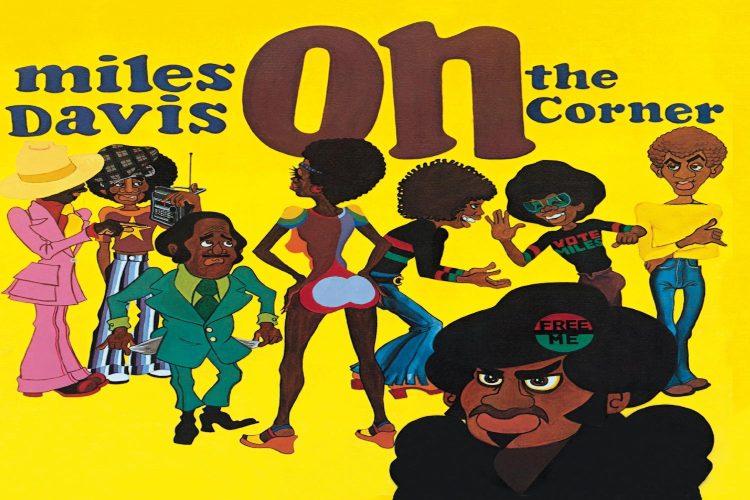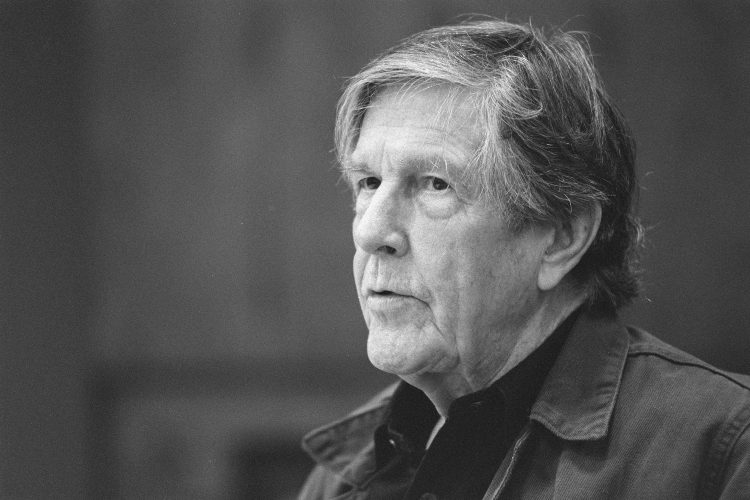2020 PostGenre Hall of Fame Inductee: Miles Davis’ ‘On the Corner’
|
Getting your Trinity Audio player ready...
|
“An insult to the intellect of the people.” “Repetitious crap.” “Pure arrogance.” These are just a few of the choice descriptions provided to Miles Davis’ On the Corner (Columbia, 1972) upon its initial release. Or, as Stan Getz described it, “[t]hat music is worthless. It means nothing; there is no form, no content, and it barely swings.” To be fair, many artists on the recording also didn’t fully appreciate it. Paul Buckmaster, who contributed significantly to the sessions, referred to it as his least favorite Miles Davis album. The eternally exploring saxophonist Dave Liebman even seemed to struggle with it, calling it “pretty chaotic and disorganized.” The label did not give a much warmer welcome. And yet, almost half a century later, many – this writer included – recognize it as the trumpeter’s magnum opus. That is a particularly impressive recognition when one considers that the legendary artist had revolutionized music several times throughout his career. What explains such polarizing perspectives?
Within its full context, it is easy to see why On the Corner initially met great animosity. Throughout his career, Miles can be seen as a chameleon, albeit one that adapts not to the current environment surrounding him but instead the one on the horizon yet to come. As the man himself once stated, “If anybody wants to keep creating they have to be about change. Living is an adventure and a challenge. When people come up to me and ask me to play something like ‘My Funny Valentine,’ some old thing that I might have done … I tell them to go buy the record. I’m not there in that place any longer and I have to live for what is best for me and not what’s best for them.” Each time listeners thought they had arrived on his street, Miles was already on another block, if not in a different city entirely. In the mid-1960s, his Second Great Quintet’s stretching of chordal structure left some fans of his earlier recordings out in the cold. By the end of that decade, even lovers of that group became alienated by his increased incorporation of electric instruments, riffs, and ideas borrowed from “rock” and different cultures. Each seismic shift further increased the group of his detractors.
Even with this backdrop, On the Corner was a radical departure. The trumpeter’s clear and exalted tone or the subdued Harmon-muted one for which he became well known seemed like dreams of a long-forgotten past. Instead, wah-wah pedals now disguised the bandleader’s now electrified voice. That is, when he didn’t completely put the horn aside in favor of keyboards. Coltrane’s “Sheets of Sound” and Shorter’s galaxial travels gave way to Liebman and Carlos Garnett’s winding, seemingly free-form explorations. Heavy improvised, yet seemingly repetitive, rhythms derived from funk and African and Indian music drove the ensemble, moving away from some of the clearer individualistic moments by drummers like Tony Williams. Miles’ seeming former reluctance towards avant-garde concepts twisted into a fascination with experimental composers, particularly Karlheinz Stockhausen and Ornette Coleman. The tape manipulation Teo Macero helped master on Bitches Brew (Columbia, 1969) was now writ large. Where Sketches of Spain (Columbia, 1960) hoped to depict life in Iberia, this album intended to portray it from the gritty urban streets.
Columbia Records, completely unsure what to do with the recording, just relied upon Miles’ prior works and labeled it “jazz.” Oblivious – intentionally or otherwise – that the target demographic was young Black men who listened to Sly and the Family Stone or James Brown, not Kind of Blue (Columbia, 1959). The LP sleeve itself displayed Corky McCoy’s Blaxploitation-influenced artwork yet no names of other musicians on the album, something that would seemingly appeal to the bandleader’s target audience but less likely the label’s. In other words, horrible marketing further harmed a work that was already difficult for many to grasp. Small wonder it became known as “the most hated album in jazz.”

But as the years passed, the importance of On the Corner became undeniable. The recurring rhythms and ideas foreshadowed the sampling producers and DJs would take to a new realm with “hip hop.” The aggressiveness and avant-garde sensibilities would guide “post-punk.” The continued tape manipulations and electronic experiments would presage the rise of “electronica.” It would also create new paths through “jazz” and “funk.” Like with Stravinsky’s Rite of Spring six decades earlier, Miles Davis was just ahead of his time.
But was Miles ever concerned his art would remain underappreciated forever? As a Black man, he was used to his accomplishments being minimized or ignored entirely by a hostile society. But it seems his adherence to his vision went beyond this as well. He knew the true brilliance of his vision and didn’t care how few people understood it at the time. There is a famous anecdote whereby a fan approached Miles sometime in the 1970s and stated, “I’ve followed you through all your changes but I don’t get this latest thing.” His response: “I can’t wait for you to catch up, motherfucker.”
Tracklist: 1. On the Corner; 2. New York Girl; 3. Thinkin’ One Thing and Doin’ Another; 4. Vote for Miles; 5. Black Satin; 6. One and One; 7. Hellen Butte; 8. Mr. Freedom X.
Personnel: Miles Davis (electric trumpet with wah-wah, organ), Dave Liebman (soprano saxophone, tenor saxophone), Carlos Garnett (soprano saxophone, tenor saxophone), Bennie Maupin (bass clarinet), Chick Corea (Fender Rhodes, keyboards), Herbie Hancock (Fender Rhodes, keyboards), Harold Ivory Williams (keyboards), Cedric Lawson (organ), Dave Creamer (guitar), Reggie Lucas (guitar), John McLaughlin (guitar), Khalil Balakrishna (electric sitar), Collin Walcott (electric sitar), Michael Henderson (bass guitar), Don Alias (drums, percussion), Jack Dejohnette (drums), Al Foster (drums), Billy Hart (drums), Mtume (percussion), Paul Buckmaster (cello), Badal Roy (tabla).




2 thoughts on “2020 PostGenre Hall of Fame Inductee: Miles Davis’ ‘On the Corner’”